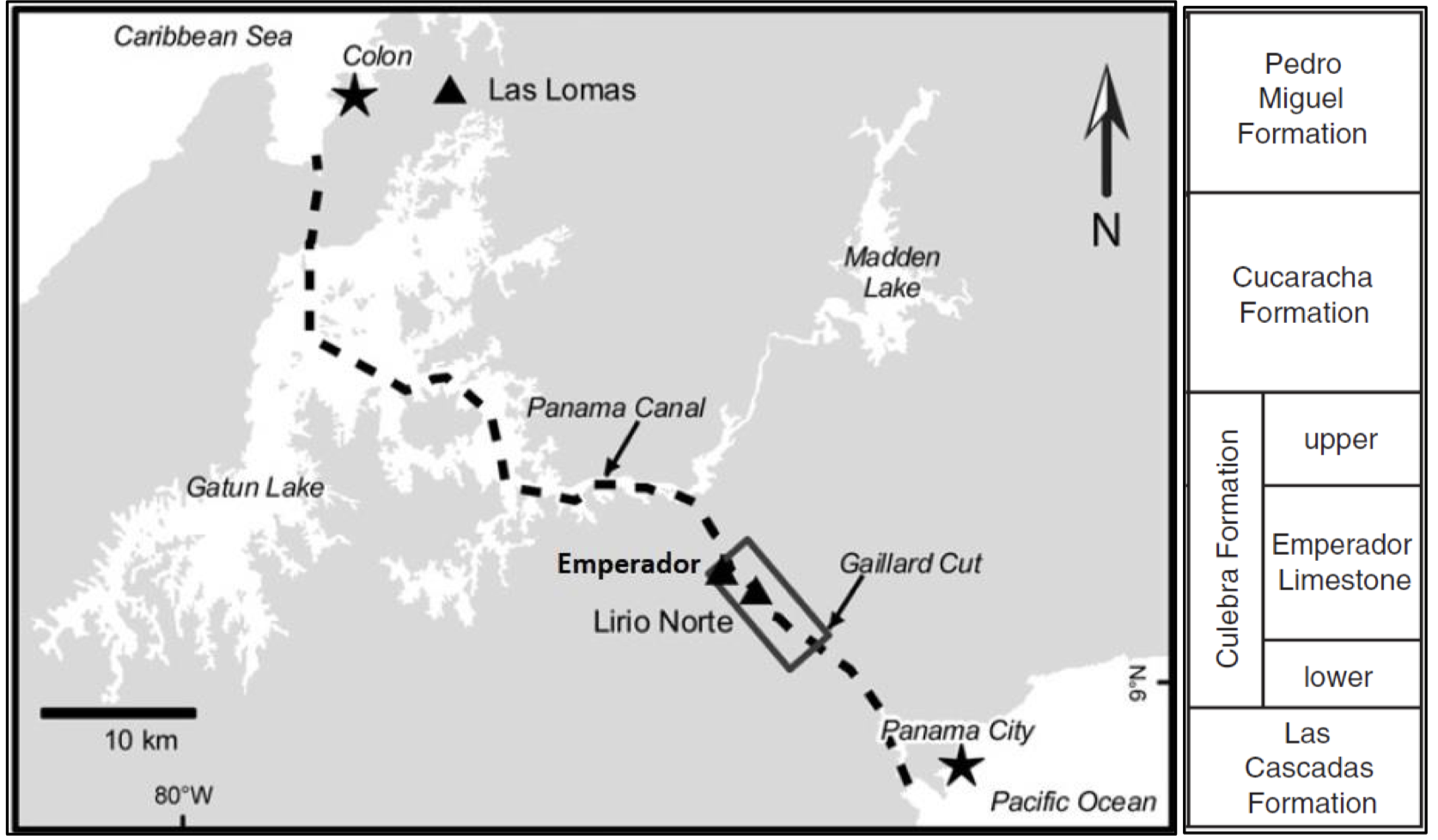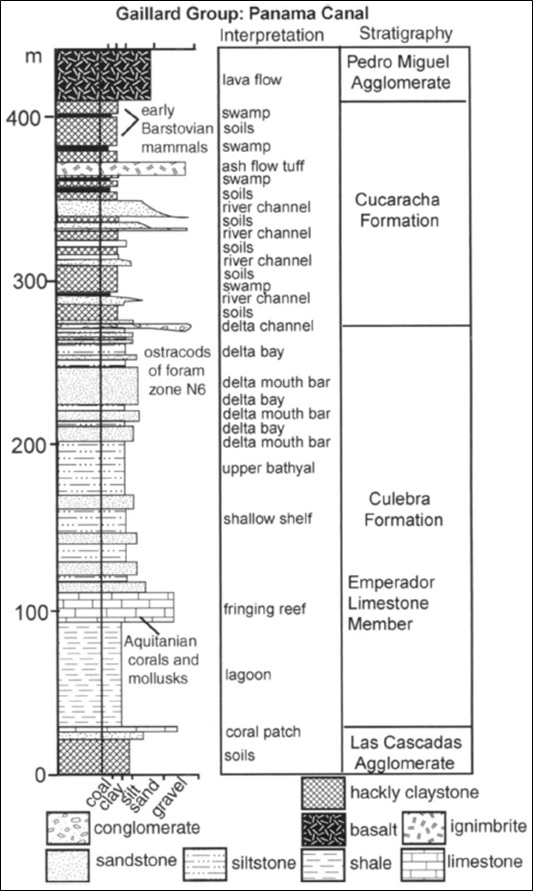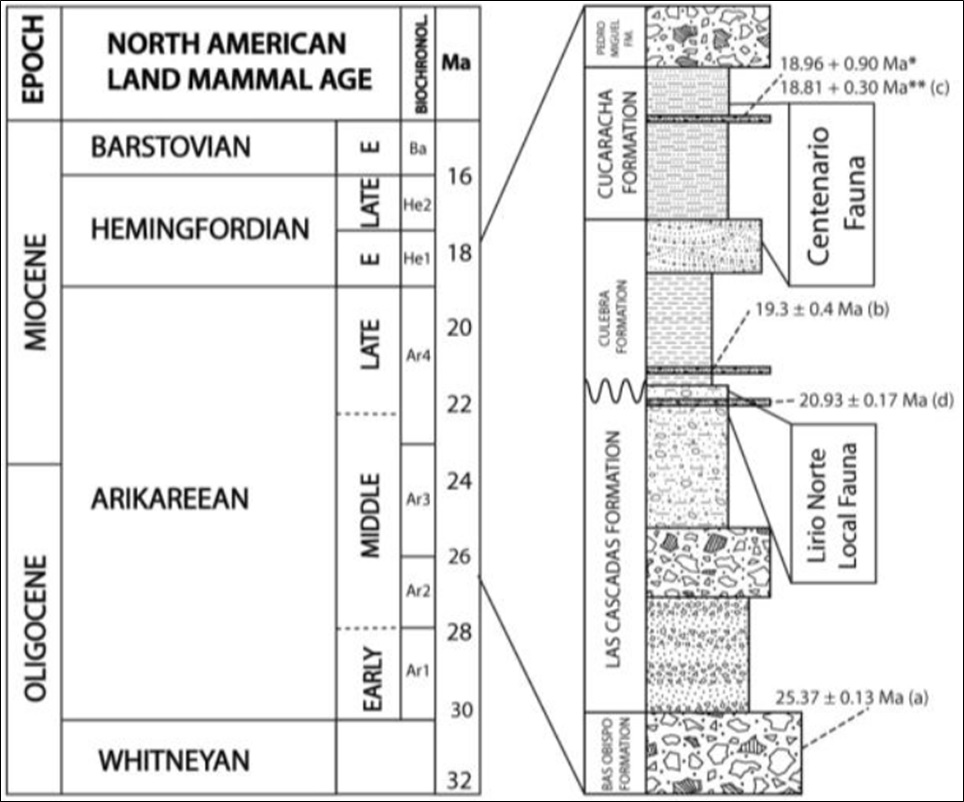Gaillard Gr
Type Locality and Naming
The stratigraphic sequence cropping out along the Culebra Cut (Figure 1), in the Panama Canal, encompasses Eocene to middle-late Miocene volcanic, volcanosedimentary, and clastic units (Woodring and Thompson (1949); Woodring et al. (1982); Kirby et al. (2008); MacFadden et al. (2010); Montes et al. (2012a, 2012b)).
This stratigraphic interval (Figure 093) represents one of the most complete and best exposed Oligocene and Miocene volcanic sequences within the Central American arc (Rooney et al. (2011)). The northern part of the Culebra Cut is composed mainly of Eocene–early Miocene volcanic and volcaniclastic formations (Bas Obispo Fm and Las Cascadas Fm), whereas the southern part is mainly characterized by shallow marine and volcaniclastic continental sequences of the Culebra Fm and Cucaracha Fm (Kirby et. Al. (2008)). The Las Cascadas Fm, Culebra Fm, and Cucaracha Fm, together with the overlying volcanic Pedro Miguel Fm comprise the Gaillard Gr in the Culebra Cut.
[Figure 1. (Left) The Panama Canal showing the location of the Culebra Cut (Gaillard Cut) together with the Emperador and Lirio Norte faunal areas. Modified from Uhen et al. (2010). (Right) General stratigraphy of the Gaillard Gr. Kirby et al. (2008). ]
Synonym:
Lithology and Thickness
See the individual description of the four formations comprising the Gaillard Gr (Las Cascadas Fm, Culebra Fm, Cucaracha Fm, Pedro Miguel Fm) (Figure 2-3).
Thickness: Up to 1,175 meters
[Figure 2. Stratigraphy and paleoenvironments of the Miocene Gaillard Gr. Retallack & Kirby (2007).]
[Figure 3. Stratigraphic section of the Gaillard Gr at the Culebra Cut area showing the stratigraphic position of the Las Cascadas fossil assemblage (Lirio Norte Local Fauna), the Emperador Limestone (19.3 Ma) within the Culebra Fm, and the Centenario Fauna. Rincon (2016).]
Relationships and Distribution
Lower contact
Upper contact
Regional extent
GeoJSON
Fossils
Age
Depositional setting
The Gaillard Gr in the Culebra Cut, a sequence of volcanic rock, and marine to terrestrial sediments and paleosols that fill the southeastern part of the Panama Canal Basin (Figure 3). The Culebra Cut stratigraphic sequence encompasses a mosaic of environments including mangrove forest, forests, shallow marine, and transitional environments.
Additional Information
References: Woodring and Thompson (1949); Woodring et al. (1982); Kirby et al. (2008); MacFadden et al. (2010); Rooney et al. (2011); Montes et al. (2012a, 2012b); Rincon et al. (2012a, 2012b);


